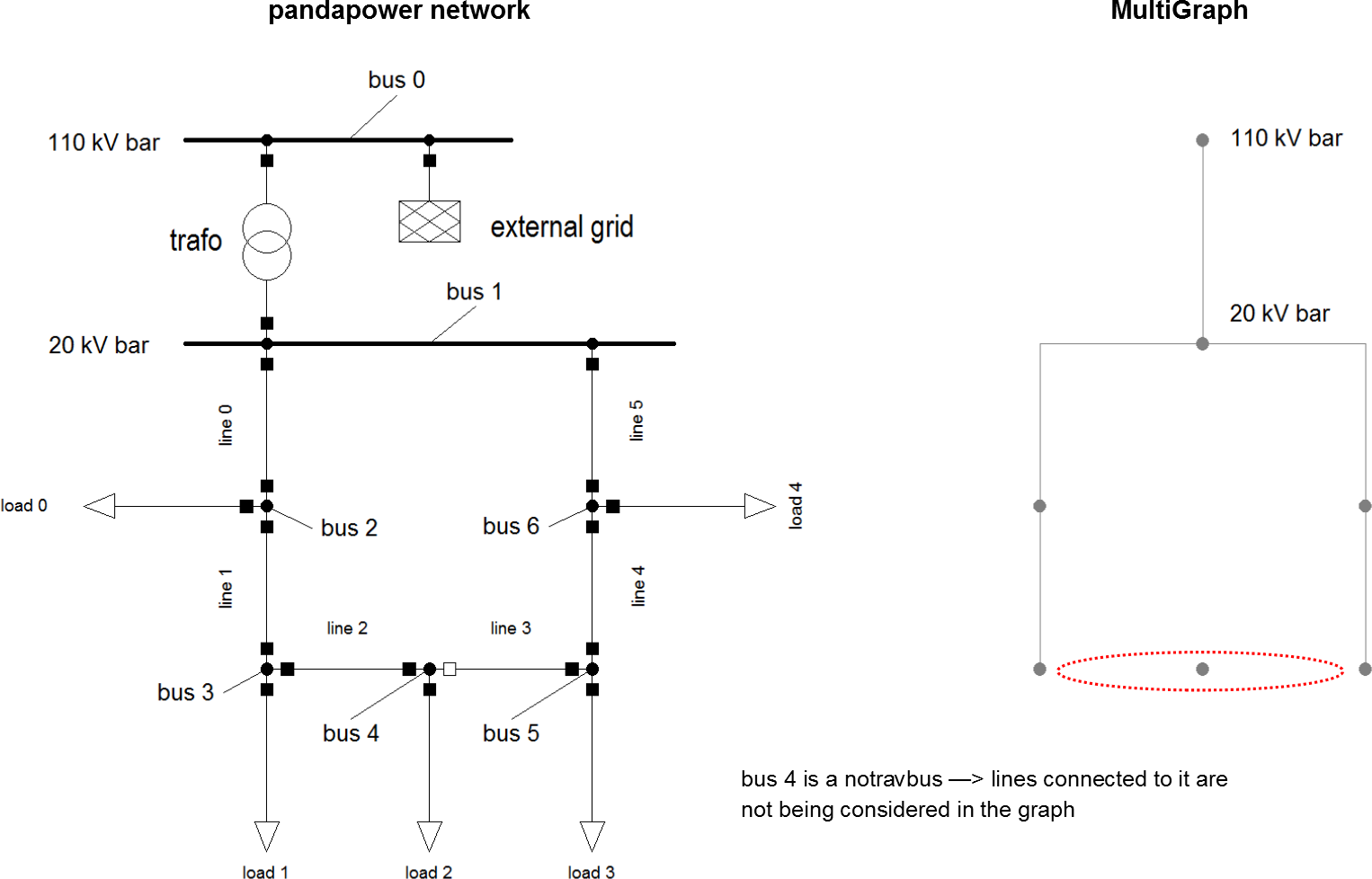Create networkx graph¶
The basis of all topology functions is the conversion of a padapower network into a NetworkX MultiGraph. A MultiGraph is a simplified representation of a network’s topology, reduced to nodes and edges. Busses are being represented by nodes (Note: only buses with in_service = 1 appear in the graph), edges represent physical connections between buses (typically lines or trafos). Multiple parallel edges between nodes are possible.
This is a very simple example of a pandapower network being converted to a MultiGraph. (Note: The MultiGraph’s shape is completely arbitrary since MultiGraphs have no inherent shape unless geodata is provided.)
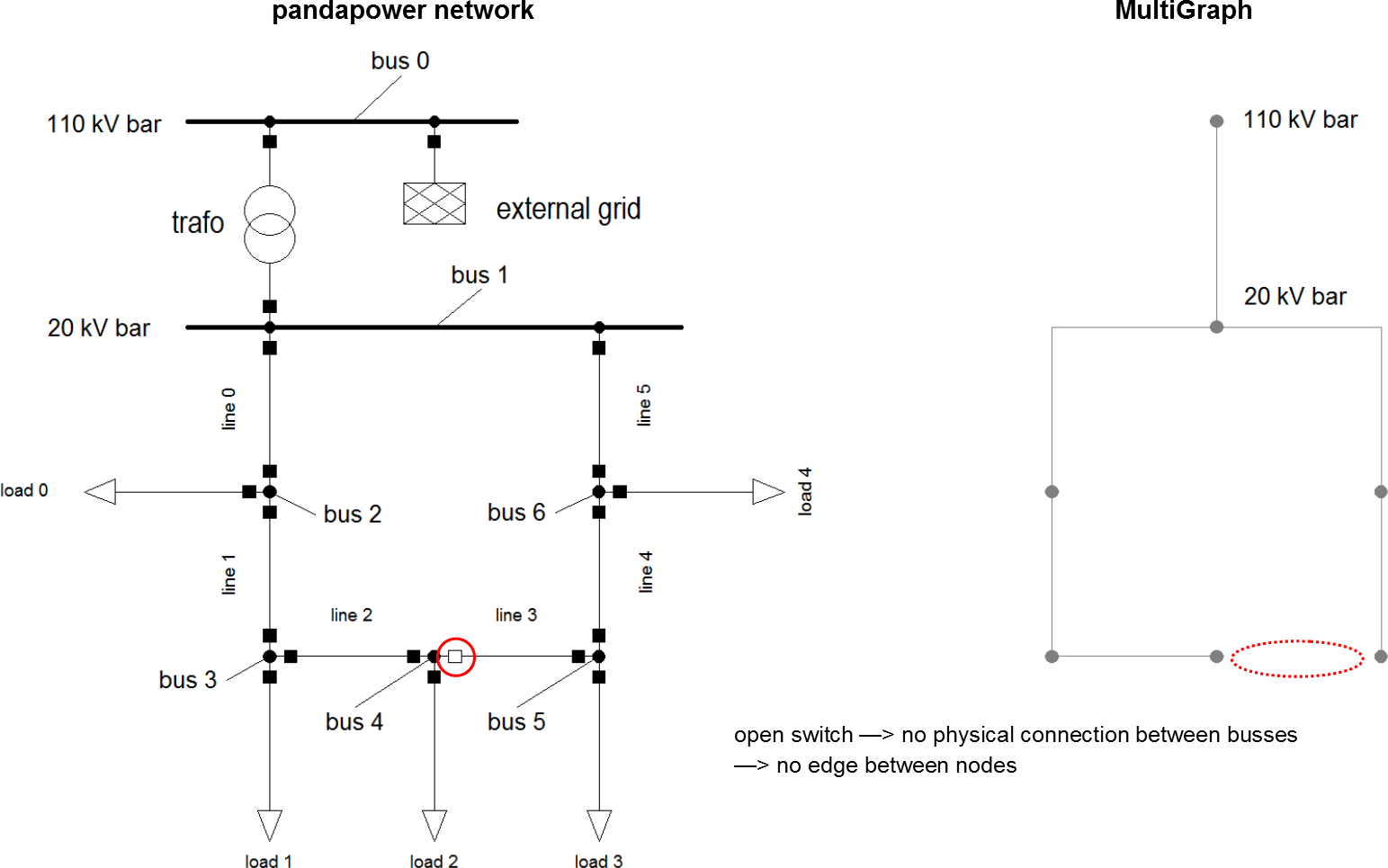
Nodes have the same indicees as the buses they originate from. Edges are defined by the nodes they connect. Additionally nodes and edges can hold key/value attribute pairs.
The following attributes get transferred into the MultiGraph:
| lines | trafos |
|---|---|
|
|
Apart from these there are no element attributes contained in the MultiGraph!
Creating a multigraph from a pandapower network
The function create_nxgraph function from the pandapower.topology package allows you to convert a pandapower network into a MultiGraph:
-
pandapower.topology.create_nxgraph(net, respect_switches=True, include_lines=True, include_trafos=True, include_impedances=True, nogobuses=None, notravbuses=None, multi=True, calc_r_ohm=False, calc_z_ohm=False)¶ Converts a pandapower network into a NetworkX graph, which is a is a simplified representation of a network’s topology, reduced to nodes and edges. Busses are being represented by nodes (Note: only buses with in_service = 1 appear in the graph), edges represent physical connections between buses (typically lines or trafos).
- INPUT:
- net (pandapowerNet) - variable that contains a pandapower network
- OPTIONAL:
- respect_switches (boolean, True) - True: open switches (line, trafo, bus) are being considered (no edge between nodes)
- False: open switches are being ignored
include_lines (boolean, True) - determines, whether lines get converted to edges
- include_impedances (boolean, True) - determines, whether per unit impedances
- (net.impedance) are converted to edges
include_trafos (boolean, True) - determines, whether trafos get converted to edges
nogobuses (integer/list, None) - nogobuses are not being considered in the graph
- notravbuses (integer/list, None) - lines connected to these buses are not being
- considered in the graph
- multi (boolean, True) - True: The function generates a NetworkX MultiGraph, which allows
- multiple parallel edges between nodes False: NetworkX Graph (no multiple parallel edges)
- calc_r_ohm (boolean, False) - True: The function calculates absolute resistance in Ohm
- and adds it as a weight to the graph False: All resistance weights are set to zero
- calc_z_ohm (boolean, False) - True: The function calculates magnitude of the impedance in Ohm
- and adds it as a weight to the graph False: All impedance weights are set to zero
- OUTPUT:
- mg - Returns the required NetworkX graph
- EXAMPLE:
import pandapower.topology as top
mg = top.create_nx_graph(net, respect_switches = False) # converts the pandapower network “net” to a MultiGraph. Open switches will be ignored.
Examples
create_nxgraph(net, respect_switches = False)
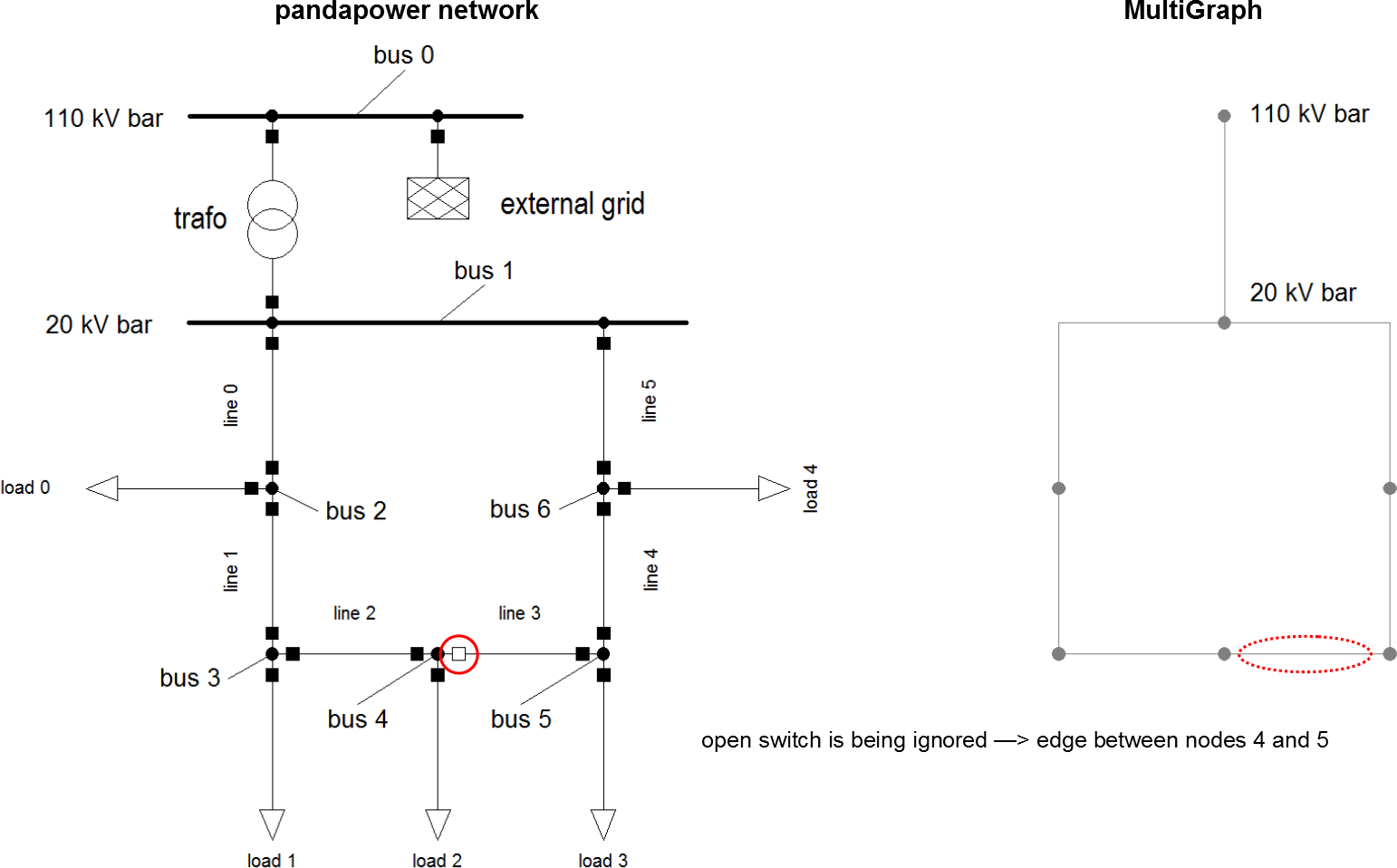
create_nxgraph(net, include_lines = False, include_impedances = False)
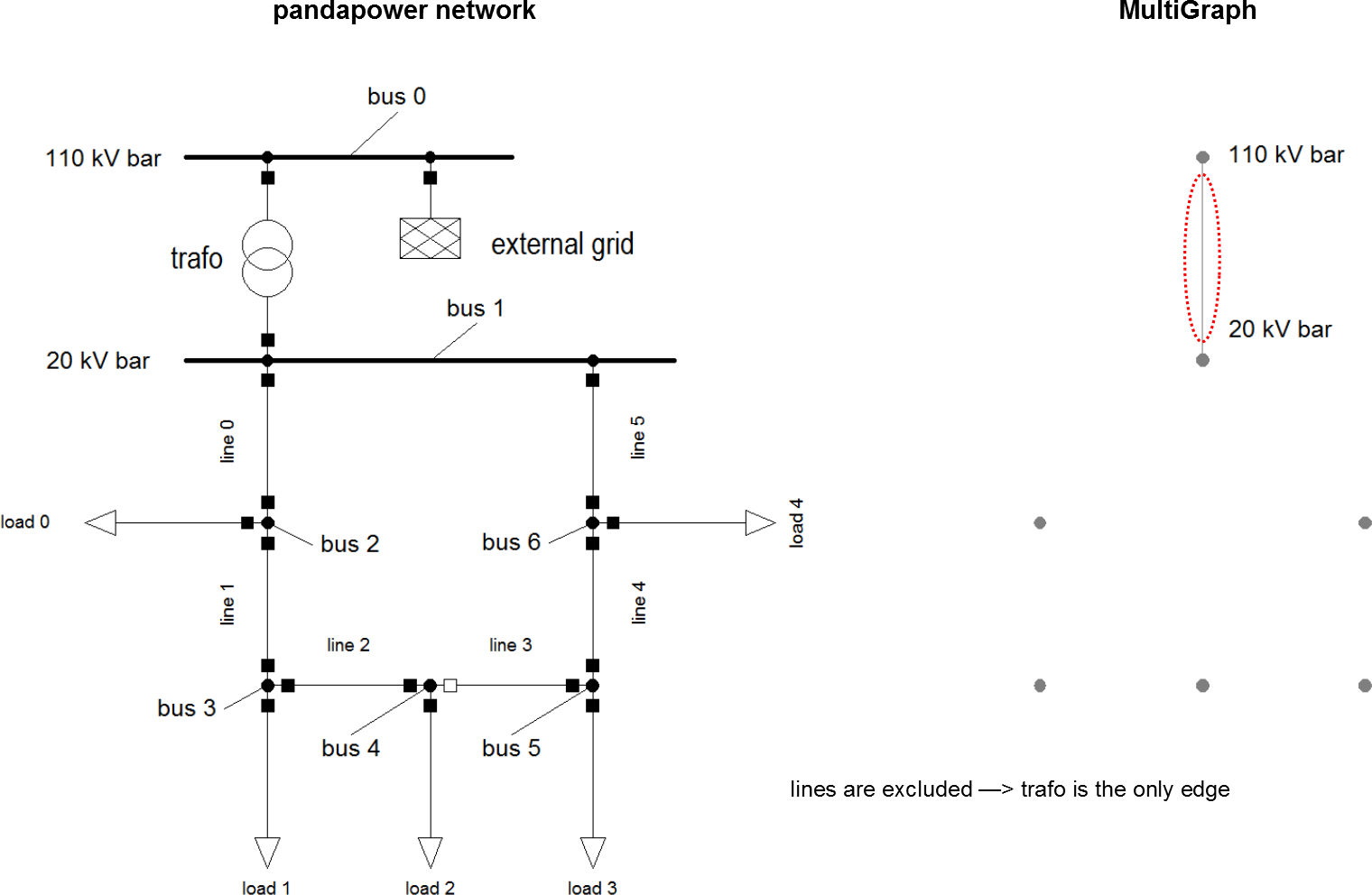
create_nxgraph(net, include_trafos = False)
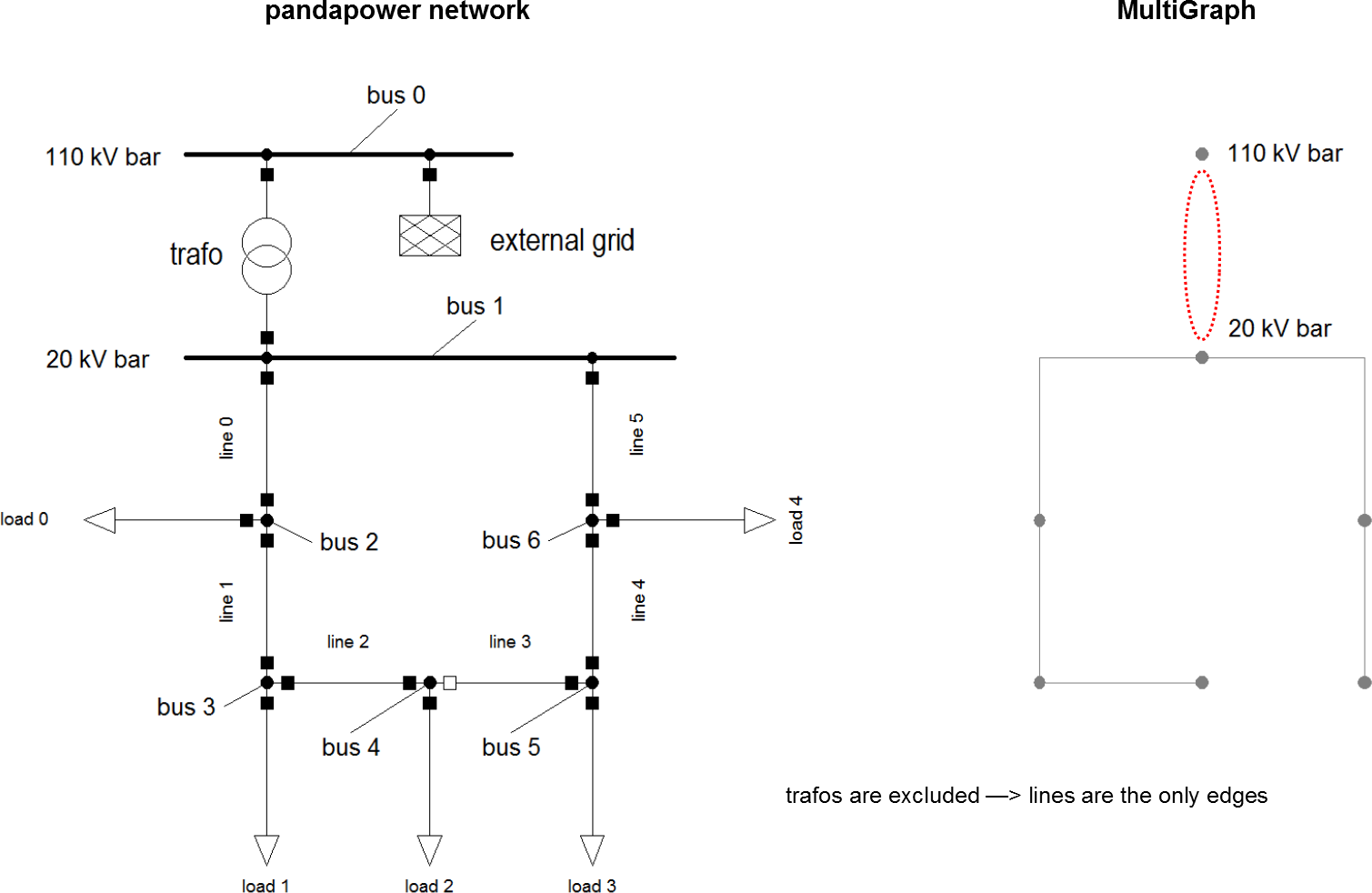
create_nxgraph(net, nogobuses = [4])
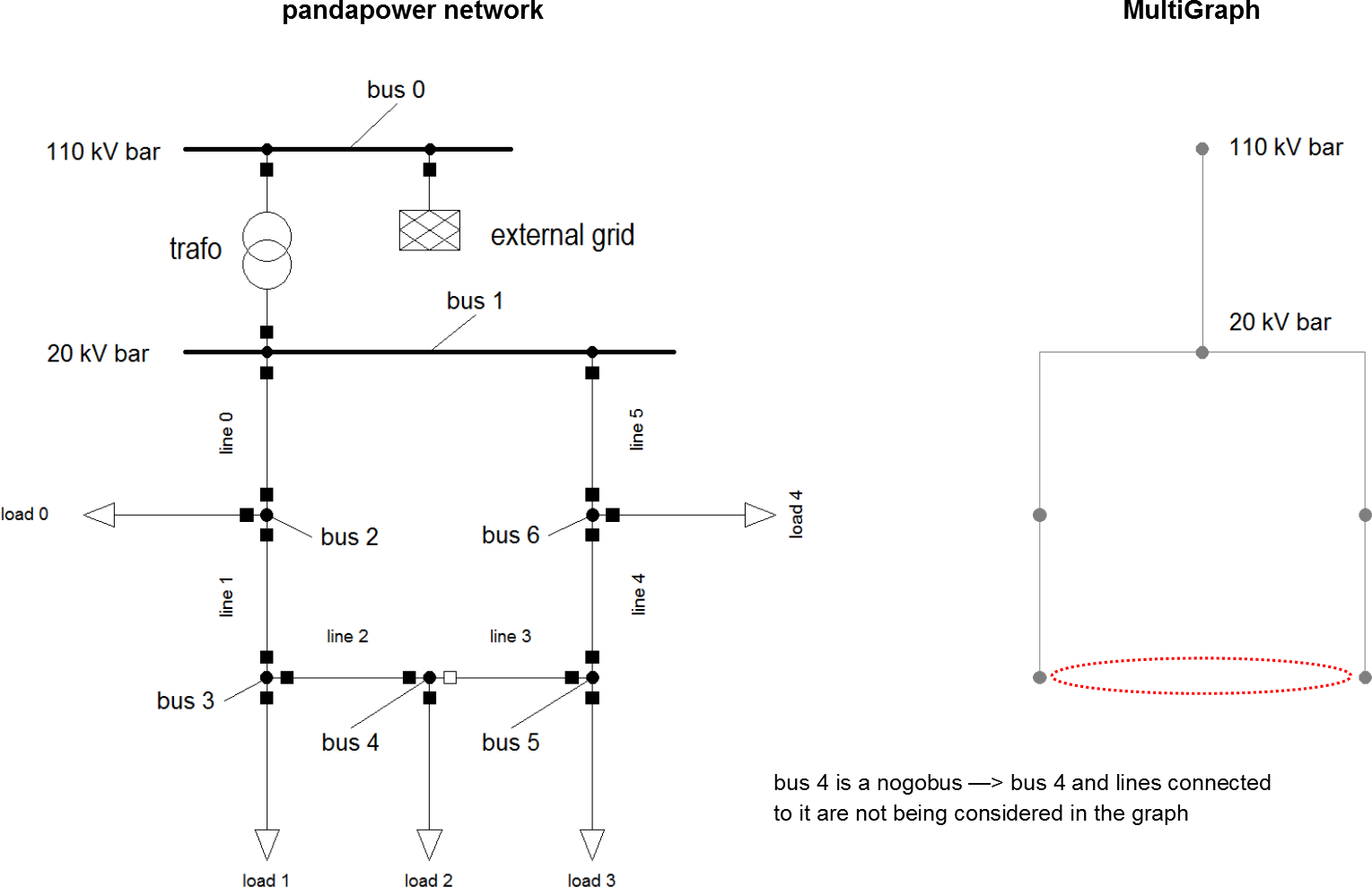
create_nxgraph(net, notravbuses = [4])
